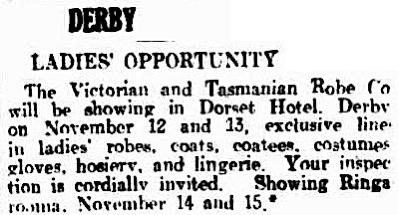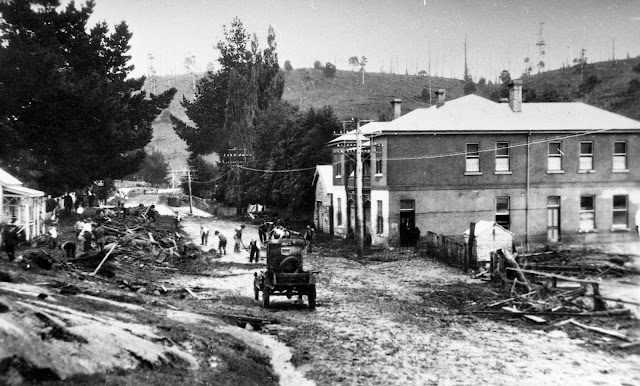Pyemmairrener Aboriginal People
Aboriginal people arrived in Tasmania about 40,000 years ago. Then the end of the Ice Age about 11, 00 years ago caused sea levels to rise and separated Tasmania from the Australian mainland. (New Guinea was also connected to Australia until about 10,000 years ago, and people could simply walk down Cape York)
These "mobs" or sub-tribes group themselves into several broad divisions, more properly deserving the name of "tribes". In these larger divisions separate languages or dialects were spoken, the vocabularies of which were widely different, as appears from Milligan's Vocabulary. Minor differences of dialect must have been numerous, for Robert Clark, the catechist, states that on his arrival at the Flinders' Settlement in 1834, eight or ten different languages or dialects were spoken amongst the 200 natives then at the establishment, and that the blacks were "instructing each other to speak their respective tongues."
The area was surveyed by James Scott in 1855.
Nine palawa language groups lived in Tasmania in small clan groups when first colonised. However, there is a lack of information about the similarities and differences between thees groups.
 |
| Nicolas Baudin & N M Petit of Tasmanian Aboriginal, 1807 (The French spent 10 weeks exploring Tasmania, charting the east coast and frequently interacting with Tasmanian Aboriginal people) |
The writings of James Backhouse Walker about the early settlement and Aboriginal inhabitants of Tasmania, published in 1902, became a standard authority. Read here
Friendly mission: the Tasmanian journals and papers of George Augustus Robinson, 1829-1834, contains information about many aspects of Aboriginal life.
Palawa kani is the constructed Tasmanian Aboriginal language, using words salvaged from the 14 languages.
French ships Mascarin and Marquis de Castries, captained by Marion Dufresne, were the first European to encounter the Aboriginal Tasmanians. Read here
On James Cook's 3rd voyage, in January 1777, his two ships, Resolution & Discovery, dropped anchor offshore at Adventure Bay on Bruny Island, Tasmania. He described the Aboriginal dwellings as “little sheds or hovels built of sticks, and covered with bark."
In 1788, Captain William Bligh anchored the Bounty in Adventure Bay, Tasmania and Third Lieutenant George Tobin pained twenty watercolours of the area.
In 1798, George Bass and Matthew Flinders, in the sloop Norfolk, circumnavigated Van Diemen's Land. Bass described an Aboriginal shelter using a fallen branch covered with bark. Flinders later produced the multi-volume A Voyage to Terra Australis.
Napoleon Bonaparte commissioned a voyage of discovery led by Admiral Nicolas Baudin, who visited Tasmania in 1802. French plans to invade the British Colony were later revealed (1.) Baudin’s journal was not translated and published in English until 1974.
1642
Dutch Captain Abel Tasman is believed to be the first European to land on Tasmania in 1642. The Dutch did not see the Aboriginal people, but they heard a sound “resembling a trumpet or a little gong” and trees cut with notches for climbing. George Augustus Robinson explained in 1830 that these notches were for hunting possums.
The Dutch also saw many hollow trees “burnt deep inside, above the roots, while the earth had become as hard as flint because of the continual effect of the fire
1700s
In March 1773, while on James Cook’s second voyage, the Adventure, under Captain Tobias Furneaux, landed in Tasmania, spending 10 days there. James Burney was the first British person to land ashore on the south coast. Read journal
A French expedition led by Bruni d'Entrecasteaux in 1792–93, while searching for the La Pérouse expedition, made detailed surveys and charts of the southern coast of Tasmania.
1790s
 |
| In 1798, George Bass and Matthew Flinders sailed the sloop Norfolk from Sydney whether Van Diemen's Land joined to the mainland of Australia |
1800s
 |
| The Baudin expedition of 1800 to 1803. The expedition started with two ships, Géographe, captained by Baudin, and Naturaliste captained by Jacques Hamelin |
1850s
1870s
In 1874, George Renison Bell, a devout Quaker, discovered payable alluvial tin at Boobyalla, which led to the tin-mining industry around Derby.
The Brothers' Home at Derby was established in 1876 by the Krushka brothers. The Brothers Mine, gave the town its original name: Brother’s Home.
The winner of the 1876 Melbourne Cup, Briseis, inspired the name of the The Briseis Tin Mine Company at Derby.
The original Dorset Hotel in Derby was built in 1883 of timber.
1880s
The National Bank of Tasmania at Derby opened in 1888 to serve the tin mining industry but closed in the 1970s.
journeys by bullock waggon or dray over
almost im-passable tracks. The usual means of
communication was by ketch or small
steamer from Launceston to Bridport,
Boobyalla, or St. Helens, and from there,
after landing in small boats, bullock or
horse conveyances were hired for the
journey to the fields, while goods were
carried by pack horses." (*)
1890s
By the 1890s, the population of Derby was more than 3,000.
Getting goods to Derby "....involved tedious |
| The Australian handbook (incorporating New Zealand, Fiji, and New Guinea) and shippers' and importers' directory. (1895) |
journeys by bullock waggon or dray over
almost im-passable tracks. The usual means of
communication was by ketch or small
steamer from Launceston to Bridport,
Boobyalla, or St. Helens, and from there,
after landing in small boats, bullock or
horse conveyances were hired for the
journey to the fields, while goods were
carried by pack horses." (*)
1900s
The Briseis Water Race was completed in 1902. It was an engineering achievement of 48km length to channel water to Derby for mining. (Travelled through forests and rocky terrain with four ‘great’ siphons (pipes) constructed to transport the water over rivers and across gullies) *
 |
| Daily Telegraph (Launceston, Tas. : 1883 - 1928), Saturday 10 May 1902 |
 |
| Daily Telegraph (Launceston, Tas. : 1883 - 1928), Saturday 10 May 1902 |
 |
| BRISEIS TIN MINE : SLUICING FACE. (Derby, TAS). Australasian (Melbourne, Vic. : 1864 - 1946), Saturday 28 February 1903 |
 |
| BIUSEIS TIN MINE : VIEW FROM KRUSKA'S FACE, DERBY, TASMANIA, Australasian (Melbourne, Vic. : 1864 - 1946), Saturday 28 February 1903 |
WWI
In 1915, school enrolments were 236.
Derby station opened on 15 March 1919.
Briseis (Cascade Dam) was constructed between 1924 – 1926 and had a height of 70ft.
Derby station opened on 15 March 1919.
1920s
 |
| Derby Town Hall, TAS, North-Eastern Advertiser (Scottsdale, Tas. : 1909 - 1954), Friday 26 November 1926 |
 |
| North-Eastern Advertiser (Scottsdale, Tas. : 1909 - 1954), Friday 26 November 1926 |
 |
| Mercury (Hobart, Tas. : 1860 - 1954), Tuesday 5 April 1927 |
In April 1929, after five days of rain, fourteen people died, when the Briseis Dam at Derby burst its banks. Houses were swept away, and all the bridges on the Ringarooma River between Derby and the sea were also swept away.
Senior Constable William Taylor was awarded the Royal Humane Society Medal and the King George Medal for bravery for saving eight stranded miners from the devastating floods.
The collapse of the Cascade Dam and Great Depression, led to the decline of the town.
 |
| Examiner (Launceston, Tas. : 1900 - 1954), Friday 5 April 1929 |
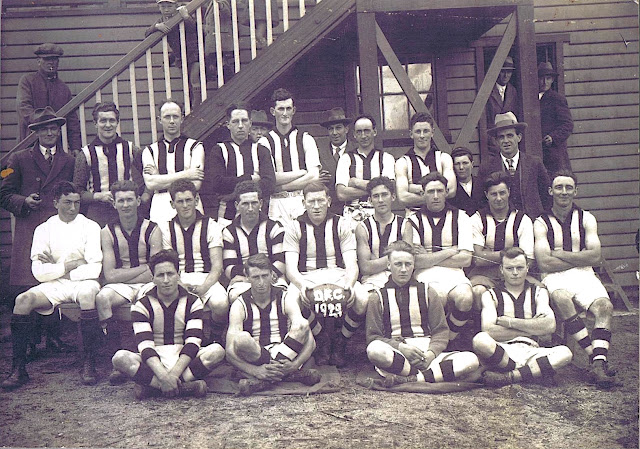 |
| Derby Football Team 1929, TAS |
1930s
The Briseis Dam, was renamed the Cascade Dam, and rebuilt in 1936.
1940s and WWII
 |
| North-Eastern Advertiser (Scottsdale, Tas. : 1909 - 1954), Friday 24 September 1943, |
1950s
 |
| Examiner (Launceston, Tas. : 1900 - 1954), Friday 24 February 1950 |
 |
| All that remains of the two-srory Imperial Hotel and a nearby shop which were gutted bya spectacular fire. at Derby, TAS, Examiner (Launceston, Tas. : 1900 - 1954), Friday 24 February 1950 |
 |
| Examiner (Launceston, Tas. : 1900 - 1954), Saturday 6 May 1950 |
 |
| Mercury (Hobart, Tas. : 1860 - 1954), Wednesday 14 April 1954 |
1980s
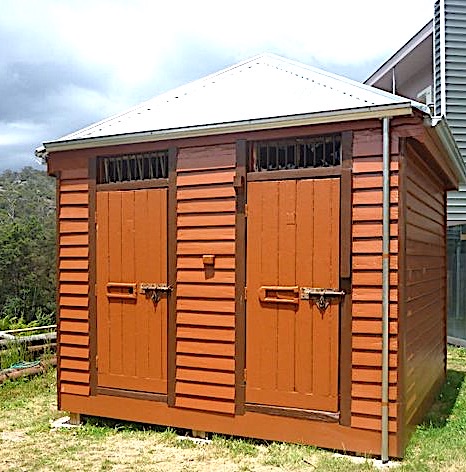 |
| The old Derby gaol, TAS, is now restored and in the grounds of the Derby Schoolhouse Museum |
1990s
2000s
 |
| An old "Shanty Town" museum was demolished in 2007, to make way for the Tin Centre. Derby, TAS |
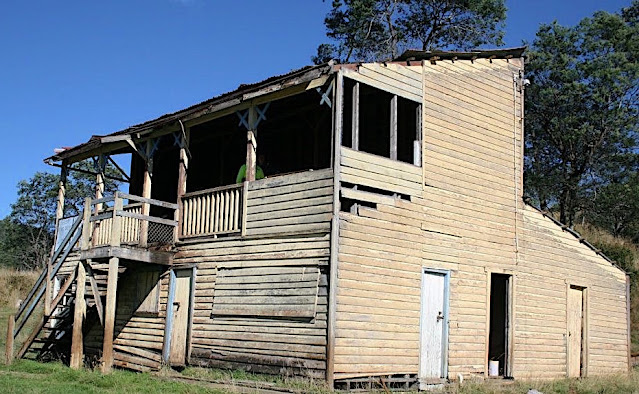 |
| The original grandstand was built in 1922 at Derby Park, TAS, and was moved to its present location in 1942 (before) |
 |
| the original grandstand was built in 1922 at Derby Park, TAS, and was moved to its present location in 1942 (after) |
 |
| Mine Tailings, Derby, Tasmania, 2016, Steven Penton |
2017: Enduro World Series announced it was coming to Derby.
The Derby River Derby was not continued in 2018.In 2018, a rundown two-bedroom cottage built in 1900, sold for $1.3 million.
Around Derby
 |
| National Bank of Tasmania, built 1888, then was a Westpac branch through to 1991, Derby, TAS |
 |
| The Derby Schoolhouse Museum is a local history museum situated in the heritage school building, which was built in 1897, TAS |
 |
| Derby, TAS |
 |
| The Dorset Hotel's original building (1883) was replaced in 1911, Derby, TAS |
 |
| The Derby Town Hall, TAS, was built in 1923 |
 |
| Mountain bike trails, Derby, TAS |
 |
| Mountain bike trails, Derby, TAS |
 |
| The entrance to one of the old mines, Derby, TAS (part of bike trails) |
 |
| Old miner's cottage, Derby, TAS |
 |
| Derby's General Store, TAS, built 1896 |
 |
| The lake in Derby, TAS, known as Briseis Hole to the locals |
 |
| Floating sauna, Derby, TAS |
Things To Do and Places To Go
More info







